Risky positioning – social aspirations and risk-taking behaviour in avalanche terrain
By Andrea Mannberg, Jordy Hendrikx & Jerry Johnson
ABSTRACT
We test if positionality (the desire to gain social status) is associated with an increased willingness to take risk among backcountry riders. If positional preferences drive risk-taking behaviour in avalanche terrain, this is especially problematic because the stakes are high and can be fatal. Our analysis is based on data for hypothetical choices from an online survey (N = 648) in North America. We find that positional riders are significantly more likely to boast about riding bold lines, more likely to associate steep riding with social respect, and more likely to say that they would accept to ride a potentially risky line. The positionality effect is present regardless of level of avalanche training. We discuss implications for avalanche training and education.
1. Introduction
Why do some individuals voluntarily subject themselves to potentially deadly risks during their leisure time? Many individuals voluntarily take risks because their personal risk preferences cause them to perceive the reward to be larger than the perceived cost. These individuals may enjoy the thrill of taking a gamble, balancing on the edge of their ability to handle the risk, or value the potential outcome so high that it is worth the risk. Others may subject themselves to danger because they are unaware of or do not reflect upon, the risk that they are taking. A third possibility is that some individuals engage in risk-taking behaviour because the risky activity holds a social value. In other words, people take risks to increase or maintain their social status within their peer group or community. This is the focus of the current study.
More specifically, the aim of this paper is to investigate if aspirations for social status drive backcountry riders to subject themselves to excessive risk in the backcountry.
Off-piste and backcountry riding is a downhill oriented winter activity that takes place on slopes that are not subject to active avalanche control. The activity usually takes place on skis, snowboards, snowshoes or snowmobiles. In this study, we focus on non-motorised riding (i.e. backcountry skiing and snowboarding). Backcountry riding provides an interesting case study to examine for many reasons. First, winter recreation in the backcountry has become increasingly popular during the past few decades. Birkeland et al. (2017) estimate an eightfold increase in the number of backcountry riders in the Western USA from 1995 to 2017. Second, the majority of backcountry riders engage in the activity voluntarily although the stakes can be very high, even fatal: a backcountry rider risks injuries or death from falling, cold, and exposure, and from avalanche accidents. In the developed world, recreationalists represent the majority of avalanche fatalities (Birkeland et al., 2017; Techel et al., 2016).
In addition to the personal consequences of bad outcomes in the backcountry, risk-taking behaviour in avalanche terrain is also associated with relatively large external costs. If a rider triggers an avalanche, that avalanche can injure both the triggering rider and other recreationalists who happen to be in the avalanche’s path or others who respond to the accident. The force of the avalanche can further destroy forests, buildings, and infrastructure. Public services such as search and rescue may also be taxed to their capacity with increased accident rates. The winter recreation industry, individuals, and society as a whole have an interest in reducing the social and economic costs of such accidents.
Identification of social factors that inflate incentives to take risk holds potential to make interventions more efficient. One such intervention is avalanche education. If the desire to gain social status, in fact, influence risky choices with respect to avalanche terrain; then, it is important to include this aspect in the curriculum of avalanche courses.
2. Theoretical background
According to classic economic theory, individuals derive utility (wellbeing) from the absolute level of their consumption of various goods, services, and activities. Classic theory further assumes that individuals are rational, i.e., that they use all available information to make choices that maximise expected utility (see e.g., Von Neumann & Morgenstern, 1944). Within a winter backcountry context, this means that riders use available information on avalanche conditions, in combination with information about their riding skills, to evaluate the risk associated with riding a certain line. Based on their preferences for risk and riding terrain, the available information and their skill in interpreting this information, they calculate the expected benefit and costs (perceived risk) associated with riding the line, and decide to go or not go. This presumes that individuals are both egoistic and ‘atomistic’, i.e., that they only care about themselves and only react to others’ behaviour if this behaviour affects their consumption possibilities.
However, the assumption of atomistic agents was questioned as early as 1899 by Thorstein Veblen, who argued that many people care about social position, and that this is manifested as a preference for relative consumption (Veblen, 1899). In other words, our wellbeing depends on how our consumption or performance compares to that of others, even if this comparison has no ‘real’ effect (e.g., the market value of our possessions or earnings). In 1949, Dusenberry developed a theoretical model based on Veblen’s ideas and coined the term positional preferences (Duesenberry, 1949).
Economists study positional preferences because they give rise to negative social externalities (i.e. side effects) and often result in an inefficient use of personal and social resources. These inefficiencies arise because positional preferences create incentives to engage conspicuous investments in the positional good or activity, and reduces the relative wellbeing of those lagging behind. Because the sole purpose of these investments is to increase social status, and since the effect is often temporary, positional investments waste resources.
There is ample evidence that many individuals’ happiness depends on relative standing. This especially the case for income (e.g., Easterlin, 2001; Luttmer, 2005), and visible status goods such as cars and houses (Alpizar et al., 2005; Carlsson et al., 2007; Solnick & Hemenway, 1998, 2005), but also for personal characteristics, such as intelligence, and physical appearance (Hillesheim & Mechtel, 2013; Solnick & Hemenway, 1998).
Positional preference theory is closely linked to theories in psychology on self-esteem and social comparisons (Baumeister & Leary, 1995; Festinger, 1954; Loewenstein, 1999; Rivis & Sheeran, 2003; Shrauger & Schoeneman, 1979; Tesser, 1988; White et al., 2009). According to Baumeister et al. (1989), our self-esteem is in part determined by our social status. Consequently, information that our performance on a socially valued task falls below social expectation threatens our self-esteem. The behaviours that provide social status depend on social norms, which can vary between different social groups (Festinger, 1954; Rivis & Sheeran, 2003; White et al., 2009). In the context of risk-taking behaviour, positional preference theory is linked to the ‘risk as value’ hypothesis (Brown, 1965), according to which some forms of risk-taking hold a cultural value. In line with this, Leary et al. (1994) find that the desire to gain a positive evaluation from others can act as a motive to engage in behaviour that is detrimental to health (e.g., sexual risk-taking and drug consumption). Aloise-Young et al. (1996) find that youth, who associate smoking with coolness and sociability, are more likely to start smoking than teenagers who do not. However, although these studies provide important insights on the link between social norms and risk-taking behaviour, they do not explicitly study the role of positional preferences. In addition, risk-taking behaviour in avalanche terrain is associated with immediate and potentially catastrophic consequences. This difference in context means that the role of positional preferences may well differ from other settings.
We summarise our theoretical framework in Figure 1. As can be seen in the figure, our theory suggests that decisions about riding terrain in the backcountry are driven both by the perceived personal value, and by the perceived social value of the action taken. The personal value of the action is determined by objective information about risk, skills to interpret this information and mitigate the risk, and by the individual’s preferences for risk. The social value is determined by the social norms present in the individual’s social circuit, and by whether or not the individual care about his social position.
Figure 1. Theoretical framework for decision-making in avalanche terrain.

Based on our theoretical framework and the aim of our study, the research question we set out to answer is ‘Do aspirations for social status drive risk-taking behaviour among backcountry skiers?’ We test the following hypotheses:
H1. Backcountry riders, who perceive that potentially risky backcountry riding holds a social value, are more likely to be positional than individuals who do not associate risk taking in the backcountry with social status.
H2. Backcountry riders, who have a personal preference for risk taking behaviour, are more willing to ride risky backcountry terrain than more risk averse individuals.
H3. Backcountry riders, who hold positional preferences for potentially risky backcountry riding terrain, are more willing to subject themselves to avalanche risk than non-positional riders.
Our paper contributes to the literature in several ways. Our main contribution is that we link positional preferences to voluntary risk-taking with high stakes for an increasingly popular leisure activity – backcountry skiing. A small number of previous studies have analysed the link between positional preferences and risk-taking behaviour (Friehe & Mechtel, 2017; Haisley & Loewenstein, 2008). However, these studies focus on financial risk with relatively small stakes. Goethals and Zanna (1979) and Lamm et al. (1971) use hypothetical choice dilemmas and find that social interaction increases the probability to make a risky choice. However, in these studies, the participants made choices for a hypothetical agent and not for matter of personal importance. In the studies of real-life behaviour (Aloise-Young et al., 1996; Leary et al., 1994) the research focuses on a type of risk where the negative outcome materialises long after the activity is undertaken. In a non-peer-reviewed McCammon (2002, 2004) found that avalanche victims, who met other riders prior to a subsequent avalanche accident, missed more warning signs than did individuals who met no one. McCammon interpreted this finding as an indication that the desire to impress others increased the willingness to take risks. However, as far as we know, no previous research tests the relationship between positional preferences and voluntary physical risk-taking with immediate and high stakes.
Second, we analyse the link between positional preferences and behavioural norms. Although social comparison has been linked to social norms previously (e.g., Baumeister et al., 1989) we know of no previous research analysing if social norms predict positional preferences. Third, we evaluate if avalanche education programmes mitigate the effect of positional preferences. We have found no previous study that evaluates avalanche education in this respect.
The evaluation of the link between positional preferences and risky choices while backcountry skiing is fundamental for the development of efficient policy interventions including education or attempts to influence risky behaviours and lower the accident rate. Our study is also important because we still have very little knowledge on the mechanisms behind risk-taking behaviour in potential avalanche terrain.
Our empirical strategy rests on hypothetical choices, and therefore potentially suffers from saliency bias. However, we argue that our case study analysis provides an important first step of evaluating the consequences of positionality externalities and likely has wider applicability beyond our current case study.
3. Method
3.1. Participants
We collected data from January to April, 2018, using an online survey. To target the population of interest for this study, backcountry riders, we distributed a link to the survey via the American avalanche education provider the American Institute for Avalanche Research and Education (AIARE), an American-based producer of avalanche safety equipment (BCA), 14 American-based backcountry avalanche-forecasting centres, and a popular magazine for backcountry riding (Powder Magazine). We also presented at several regional snow and avalanche workshops in the Western USA to solicit participation. To incentivise participants to complete the survey, they were given the opportunity to participate in a lottery to win one of the set of spot prizes (value approx. 70 USD).
One thousand four-hundred and ninety-four individuals agreed to participate in the survey and were over 18 years of age. Among these, 648 provided complete answers on the relevant sections of the survey.
3.2. Measurement instruments
3.2.1. Risky terrain choices
We measure risk-taking behaviour in avalanche terrain via hypothetical, but realistic, terrain choices. Hypothetical choice scenarios have previously been used to study backcountry decision-making by Furman et al. (2010), Haegeli et al. (2010), Marengo et al. (2017), Mannberg et al. (2018), and Haegeli et al. (2019). Our choice scenario builds on the approach used by Mannberg et al. (2018). Our respondents read about a hypothetical backcountry ski tour, including information about weather, avalanche, and terrain hazards, and were asked which of two alternative routes down the mountain that they would prefer to ski, and which would they accept to ski if someone in their group wanted to ski it, and no one else objected (see Figure 2). The motivation for including both these questions in the survey was that we hypothesised that preference for steep terrain would be more closely linked to an individual’s risk preferences and skill level, while acceptance to ride the same line would be based more on external social factors (Mannberg et al., 2018). The production of these scenarios was critically important to the outcome of the survey. First, the alternatives should represent different risk levels in terms of avalanche hazard. This difference should both be correct from a snow science perspective (objective risk) and clear to participants at all levels of avalanche knowledge (subjective risk). Second, to reduce the risk of saliency bias, the scenario should be realistic and engaging. Third, to identify effects, unobserved differences between scenarios should be minimised.
Figure 2. Hypothetical ski runs including terrain information (slope and aspect), relevant snow and weather information. Mountain photos by Damian Banwell.
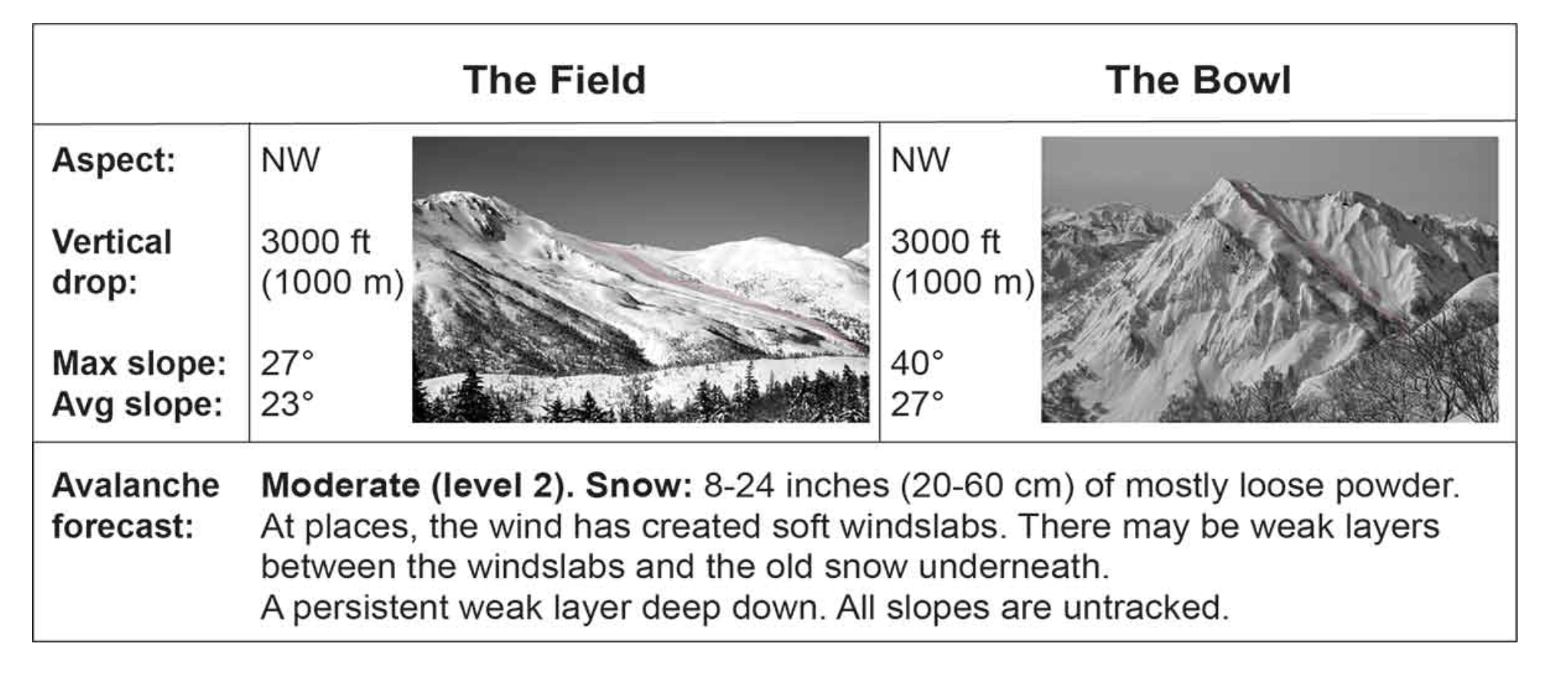
To limit the number of varying factors between the alternatives, we kept weather, snow conditions, the overall avalanche danger level, and avalanche problem identical for both runs. The only details that varied between the two runs were: 1) slope and 2) terrain features affecting the consequences of a fall or an avalanche. These factors varied systematically: The Field represented low angle terrain with low probability of an avalanche occurring and no dangerous terrain features (simple terrain according to the Avalanche Terrain Exposure scale, ATES (Statham et al., 2006)), while the Bowl represented a steep terrain trap in which avalanches from multiple zones were possible (complex terrain according to ATES). The difference in risk between the two options was intentionally large, such that the majority of participants would perceive the risk in the order as intended. To avoid ordering effects, we randomised the order of presentation of the two runs to respondents.
3.2.2. Risk attitudes and perception
We measure attitudes to risk with an instrument developed by Dohmen et al. (2011). This instrument consists of a direct and simple question about willingness to take risk. Dohmen et al. (2011) found that simply asking participants about their risk-attitudes outperformed more elaborative measures (e.g., lottery experiments) in terms of predicting risk-taking behaviour in a large and representative sample. Questions that asked about specific types of risk-taking (financial, health, and sports) outperformed general questions about risk (Dohmen et al., 2011). We, therefore, elicited risk-preferences via the simple question; ‘When it comes to riding, how willing are you to take risks?’? In accordance with Dohmen et al. (2011), we asked participants to answer on a scale from 0 (not at all willing to take the risk), to 10 (very willing to take risks).
To be able to control for differences in perceived risk, we used an instrument developed by Mannberg et al. (2018) and asked respondents to answer the following question: ‘Taking all things into consideration (snow conditions, avalanche hazard, and terrain), how risky do you think that it would be for you, personally, to ride down the runs?’ Participants answered this question on a scale from 1 (extremely low risk) to 7 (extremely high risk) for each run. In addition to enabling us to control for the perceived risk of the runs, this question allowed us to make sure that participants ranked the risk of the different runs in accordance with our intended design, and that subsequent responses were not as result of mistaken-perceived relative risk.
3.2.3. Positional preferences, positional behaviour, and social norms
Previous research on positional preferences relies on hypothetical choices between two states of the world. In state A, the respondent has more in absolute value but less than the average in society. In state R, the respondent is relatively better off in comparison to others but have less in absolute value than in state A (see e.g., Alpizar et al., 2005; Carlsson et al., 2007; Solnick & Hemenway, 1998). Unfortunately, this approach is inadequate for studies of risk-taking behaviour, because it requires that the consumed good is unequivocally ‘good’, i.e., that more is always better. Since different people have different preferences concerning risk and complex riding terrain, we could not rely on this approach. Instead, we developed a new instrument. Per definition, an individual is positional about backcountry riding terrain if his satisfaction with a past riding experience depends on the terrain choices made by others. We, therefore, chose to elicit positional preferences with the following question:
‘Imagine a weekend where you have been out riding. You rode terrain that you judged to be safe and responsible given current avalanche conditions and your riding and terrain management skills. Snow conditions were good. Now imagine that you learned afterwards about the riding others had in your social group that weekend (either by talking with them or on social media). How would your experienced level of satisfaction with your weekend be affected by the following situations? Presume that no accidents occurred.
You rode much more challenging terrain than others did
Others rode much more challenging terrain than you did’
The respondents answered on a seven-point scale from −3 (much less satisfied) to +3 (much more satisfied) for both questions. Zero was explicitly defined as ‘no effect’. We define a rider as positional for terrain if the rider state that they would feel less satisfied if others rode more challenging terrain than they did, and more satisfied if they learned that they had ridden more challenging terrain than others did. Both conditions had to be present in order for the participant to be considered positional with respect to terrain. The motivation for this strict definition of positionality is that some individuals answered that they would be positively affected both if others rode more challenging and less challenging terrain. We have no way of testing if these individuals derive utility from mere information, or if their answers represent mindless responses. By design, the respondent has to answer the first question in the positive and the second in the negative in order to be identified as positional. Thus, we reduce the risk of mislabelling non-positional individuals as positional.
To validate our measure of positionality, we developed questions aimed to capture behaviour that can be presumed to signal both positionality for, and a social value of, risky terrain. We first asked the participants how likely it would be that they talk to friends about, and/or post pictures on social media of, each of the hypothetical runs (scale: 1 = extremely unlikely, 7 = extremely likely). We compared the answers to these questions for each run (posting pictures and talking to friends) and created two new dichotomous variables. These two new variables take the value one if the individual states that they would be relatively more likely to post a picture of (talk to friends about) the relatively steep line (the Bowl) in comparison to the less steep line, and zero otherwise. In other words, the dummy variables measure the relative likelihood to boast about the steep and less steep line.
Finally, we evaluated personal values and social feedback via four statements: ‘I admire riders who ride bold terrain/lines’, ‘I admire riders who have a strong focus on safety while out riding’, ‘If I ride bold terrain/lines, I get respect from my friends’, and ‘If I have a strong focus on safety while out riding, I get respect from my friends’. The first two statements were aimed to capture personal norms, while the latter two aimed to capture social norms. Participants answered on a scale from 1 (Disagree strongly) to 7 (Agree strongly) (Mannberg et al., 2018).
3.3. Statistical analysis
The main aim of this study is to evaluate if positional preferences for leisure activities that involve risk are associated with heightened levels of risk-exposure. The outcome variable in our main regression equation is dichotomous, taking the value one if the individual prefers (accepts) to ride down the relatively risky run, and zero otherwise. Our interest is in the underlying, latent, propensity to engage in risky backcountry ski activities. To estimate the relationship between risk-taking behaviour, positionality for terrain, and other control variables, we, therefore, use a Probit regression model. 1 The general representation of this regression is specified in Equation (1) below.
y∗i=β1PPi+β2PRi+β3RPi+β4Avieduci+β5ln(Skiexpi)+X′iγ+εiyi=1[y∗i>0]
(1)
where for individual i, y∗i is a latent variable related to the difference in utility derived from riding down the safe and the risky run. Hence, if y∗i>0 the utility difference is positive, and the individual will therefore choose to ride down the risky run. The main explanatory factor (PPi) is a dichotomous variable taking the value one if the individual is defined as positional and zero otherwise. PRi represents the perceived risk of the risky run, RPimeasures attitudes to risk, and Avieduci captures avalanche education. This is an ordinal variable with three levels: no formal avalanche training (reference), recreational (basic) training, and professional (advanced) training. The variablelog(skiexp)i is the log of the total number of backcountry ski days (average ski days times years of skiing). We use the log of this variable due to its long-tailed distribution. Finally, Xi is a vector of socio-demographic variables such as gender, age, and education. Our tests of this model reveal that, when age enters the equation linearly, the error terms are heteroscedastic. This problem is resolved when we include the square of age as an explanatory variable. We find no other indications of heteroscedasticity in our model. However, due to the strict assumptions underlying the Probit model, we also use the semi-parametric approach suggested by Klein and Spady (1993) to estimate the model. The Klein and Spady estimator assumes that choice probability function depends on a parametrically specified index function, but it does not make any assumptions on the form of distribution that generates the disturbances. The index function allows for multiplicative heteroscedasticity of a general but known form, and for a heteroscedasticity of an unknown form if it depends only on the index.
To test if our measure of positional preferences is related to socially valued behaviour, we use a second Probit regression on our measure of positionality, with the variables related to social and personal norms as dependent variables. This regression is represented in Equation (2), below.
PP∗i=δ1SNsteepi+δ2SNsafei+δ3PNsteepi+δ4PNsafei+δ5Talk_Posti+δ6RPi+δ7Avieduci+δ8log(Skiexpi)+X′iϑ+uiPPi=1[PP∗i>0]
(2)
where PP∗i is the latent variable underlying our dichotomous measure of positional preferences for steep terrain. SN∗i and PN∗i are variables related to social (getting respect from friends) and personal (admiring other riders) norms, respectively. Finally, Talk_Posti is a dichotomous variable taking the value one if the individual states that they are more likely to either talk or post a picture of the relatively steep line compared to the less steep lines. While our heteroscedastic Probit regressions on positional preferences do not reveal any problem with heteroscedasticity, the test suggested by Wooldridge (2002) does. We are not able to solve the problem by the inclusion of non-linear effects. However, the results of our semi-parametric analyses are qualitatively the same as the simple Probit results.
4. Results
4.1. Descriptive analysis
We provide descriptive statistics for participants with complete answers in Table 1, below.
Table 1. Descriptive statistics: socio-demographics and backcountry experience.Click to download and view here.
Our sample consists of highly educated men in their thirties with substantial backcountry experience. Twenty-four percent of sample participants are female. Mean age in the sample is 37 years (median age is 34). Eighty-two percent hold a university degree. Nearly 60% of the participants have skied in the backcountry for more than 5 years. An average rider in our sample skis the backcountry 21 days per season. A majority of our participants have participated in some form of formal avalanche training. Sixty-six percent have taken recreational (basic) avalanche courses, and 20% has professional (advanced) training. Fifteen percent have no formal avalanche training. We asked participants to assess their backcountry travel skills on a scale from 1 (beginner) to 5 (extreme) (see Appendix A for details). Forty-three percent rate themselves as expert or extreme backcountry riders. Finally, we asked our respondents about their experience with avalanches. Only 4.5% of participants said that they had been involved in an avalanche accident where someone was injured, but 41% said that they had been involved in a situation where an avalanche was triggered (this is often defined as a ‘near miss’ and does not result in a burial or injury). The socio-demographics of our sample fit relatively well with other studies on backcountry riders (e.g., Fitzgerald et al., 2016; Furman et al., 2010; Haegeli et al., 2010; Marengo et al., 2017; Zweifel et al., 2016). It is, nevertheless, important to remember that our (and others’) sample is a convenience sample. As such, it is likely skewed towards motivated riders with an interest in avalanche safety and should not be generalised to the backcountry riding population as a whole.
Concerning the hypothetical choice scenario, our sample participants on average perceive the relatively steep line to be riskier than the less steep line (Wilcoxon signed-rank test z = 22.301, p < 0.001), see Figure 3.
Figure 3. Perceived risk of the relatively safe (Field) and relatively risky (Bowl) line.
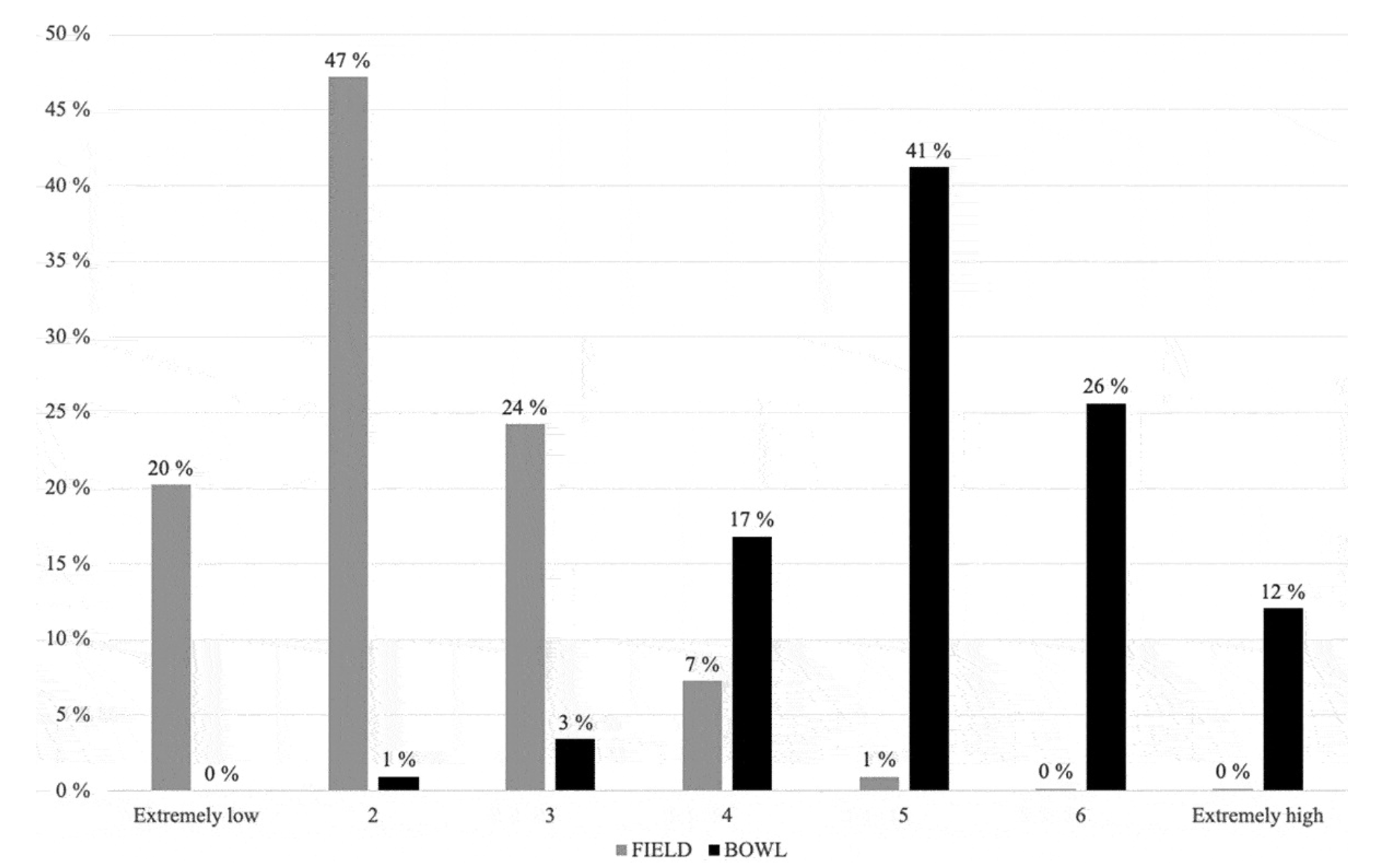
Seven percent of our sample state that they prefer to ski the relatively risky line. In contrast, 25% state that they would accept to ski the same line. The large difference between stated preferences for steep terrain and willingness to accept to ski this type of terrain is consistent with findings by Mannberg et al. (2018).
Our sample is relatively heterogeneous in terms of attitudes to risk and valuation of riding steep lines (mean = 5.1, std.dev = 1.92). The sample is much more homogenous when it comes to personal and perceived social valuation of safety. This is especially the case for admiration of riders who focus on safety. Less than 1% of our sample participants state that they strongly disagree with the statement that they admire riders who focus on safety, and the vast majority (96%) to some extent agrees with this statement. Due to the low variability of this variable, we exclude it from further analysis. The variables related to social and personal values of riding steep lines are much more symmetrically distributed (see Figure 3(a,b)).
Most of our participants state that they are relatively likely to post pictures and talk to friends about both the relatively steep and less steep line. However, a Wilcoxon signed-rank test shows that our participants deem it more likely that they would post pictures (z = 9.261, p < 0.001) and talk to friends (z = 5.814, p < 0.001) about the steeper line. Thirty-four percent state that they are relatively likely to post or talk about the steeper line (the Bowl), and that they are more likely to boast about the steeper line than to do this about the less steep line (the Field).
Finally, while our respondents on average experience an increase in contentment if they learn that their terrain choices were more challenging than their friends’, the average respondent states a reduction in satisfaction when they learn that others rode more challenging terrain during the weekend (Wilcoxon signed-rank test z = 18.538, p < 0.001, see Figure 4). Thirty-three percent of the participants state that they would feel more content with their riding weekend if other riders rode less challenging terrain than they did, and less content if others rode more challenging terrain than they did. We next turn to a more detailed analysis of our results for positional preferences.
Figure 4. (a) Admiration of others’ behaviour. (b). Earning respect for own behaviour.
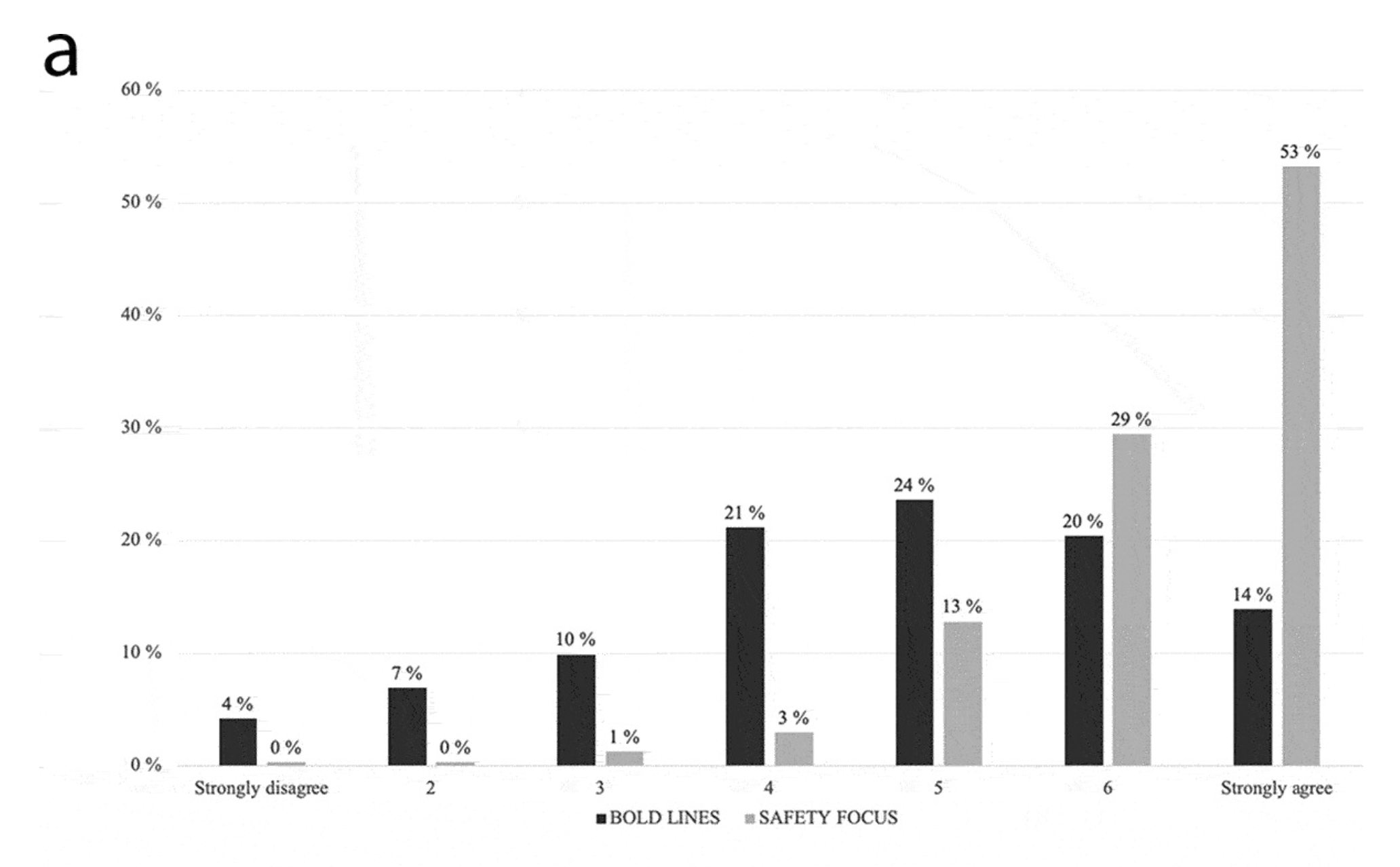
4.2. Positional preferences
In this section, we test if positional preferences correlate with other factors related to social values and signalling behaviour. The results are presented in Table 2. In Model I, we only include controls for personal norms, social norms, and status signalling. Model II includes controls for backcountry experience, socio-demographics, and attitudes to risk. Finally, the last column (‘SPML’) contains estimated parameters from the Klein and Spady (1993) non-parametric estimation.
Table 2. Correlates of positional preferences. P-values in parentheses. Click to download and view here.
As can be seen in Table 2, our results suggest that riders who associate riding bold lines with social respect are more likely to experience changes in their level of satisfaction due to other riders’ terrain choices than are riders who associate such activities with less social status. Our estimation of marginal effects suggests that the probability to be defined as a positional rider increases by about 17 percentage points (from 25.6% to 42.6%) if the participant also states that they are more likely to boast about risky lines than safe lines. Similarly, the probability that a rider is defined as positional is 12.5% for participants who strongly disagrees that riding bold lines gives social respect. For riders who strongly agrees with this statement, the corresponding probability is 55.3%. In contrast, we find that survey participants who perceive that a safety focus is associated with respect are less likely to be defined as positional. In other words, our analysis provides support for hypothesis H1.
We find no correlation between risk attitudes and positional preferences for steep terrain. This is likely a consequence of a correlation between social and personal norms related to steep skiing. If we remove these variables, we find a positive and significant correlation between willingness to take risk and positionality for terrain. Willingness to take risk and norms related to risk-taking are positively correlated. However, the correlation (0.22–0.26) is not high enough to cause severe multicollinearity.
Finally, our results suggest that individuals with advanced avalanche training are significantly more likely to react to other riders’ terrain choices, than are individuals with no formal training.
The sign of the significant marginal effects in the Probit regression is reproduced in the SML regression (it is not possible to compare the size of the coefficients). However, the Klein and Spady (1993) estimator suggest that all explanatory variables are significantly correlated with the degree of positionality.
We now turn to the analysis of main interest, i.e., to which extent positionality for challenging terrain is associated with increased risk-taking behaviour.
4.3. Risky terrain choices
To test if positional preferences for ski terrain are associated with increased risk exposure, we estimate a Probit regression model on the choice to accept to ski the risky run. Unfortunately, we cannot test the hypothesis that preference for steep terrain is relatively more linked to personal risk preferences and skill than acceptance for this type of terrain. As mentioned above, very few participants (N = 47) stated that they preferred the steep line. A multivariate regression on a dichotomous outcome variable with so few observations in one category would not yield valid results.
The results of the regressions on acceptance to ride the steep run are presented in Table 3, below. Column 1 presents marginal effects emanating from a Probit regression, while column 2 (SML) contains the Klein and Spady estimates. 2 As can be seen in the table, boasting about steep lines is included as a control variable in the models, while the variables related to social and personal norms are not. The motivation behind this is that we find no significant contribution of the social or personal norm variables to the model. 3 Our specification tests suggest that boasting about risky lines should be included in the analysis. We have also tested for interaction effects between positionality and boasting about bold lines. The coefficient of this interaction variable is not significant, and the inclusion of the variable does not add to the fit of the model. The size of the marginal effects of each variable stay unchanged. The p-value of the coefficient on positionality drops to 0.056, while the coefficient on boasting about steep lines remain significant (p = 0.021).
Table 3. Correlates of hypothetical risk-taking. P-values in parentheses.Click to download and view here.
Our model results suggest that the most important explanatory variable for accepting to ride down the risky line is the perceived risk of riding that line. A one-unit increase in perceived risk is associated with an 18.5-percentage point reduction in the probability to accept to ski the line. As expected, willingness to take risk is positively correlated with willingness to accept to ski a steep line, thus lending support to hypothesis H2.
Although perception of and attitudes to risk are clearly the most important determinants of acceptance to ride the risky line, positionality for terrain (sensitivity to others’ terrain choices) also hold explanatory power. Our estimation of marginal effects suggests that, if a rider is positional, the probability to accept to ride down the steeper line increases nearly 45% (9 percentage points). The effect of boasting about the steep line (talking about or posting pictures of) is on par with the effect of positional preferences. These findings lend support to hypothesis H3.
Turning to our socio-demographic variables, we find that the propensity to accept to ski the risky line falls slightly with age. However, the effect is diminishing, and the combined marginal effect of age is insignificant. Surprisingly, our model results suggest that male riders are less willing to accept to ride down the risky line than are female riders. Men in our sample say that they are more willing to take risk (t = – 5.529, p < 0.001), and perceive the risk to be lower (t = 3.504, p < 0.001), than women. However, we find no significant interaction between gender and perception of or attitudes to risk. If we remove controls for risk preferences and perception from the model, the coefficient on gender becomes positive but the p-value increases above 0.1. Finally, we find no correlation between backcountry experience and probability to accept the risky line. However, we do find that individuals with advanced avalanche training are significantly less likely to accept to state that they would accept to ride down the risky line than individuals with no avalanche training. We find no significant interaction effects between either backcountry experience and avalanche training, or between any of these variables and positionality for terrain (see Figure 6). In other words, individuals with a high level of avalanche training are affected by positional preferences as much as individuals with a low level of avalanche training (see Figure 5).
Figure 5. Changes in satisfaction due to riding activities by others.
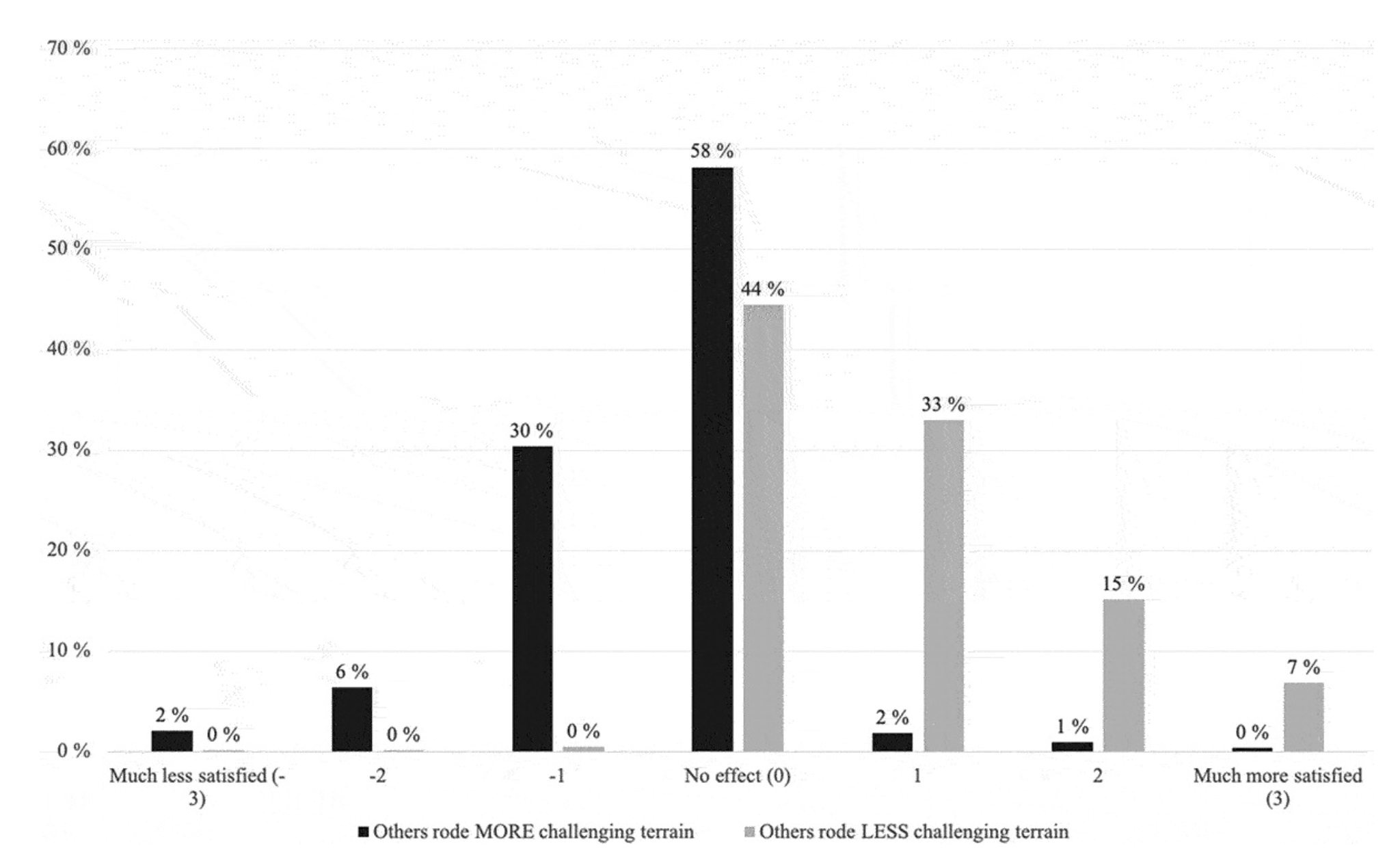
Figure 6. Probability to accept the steep line for positional and non-positional individuals, at different levels of avalanche education. Predicted values.
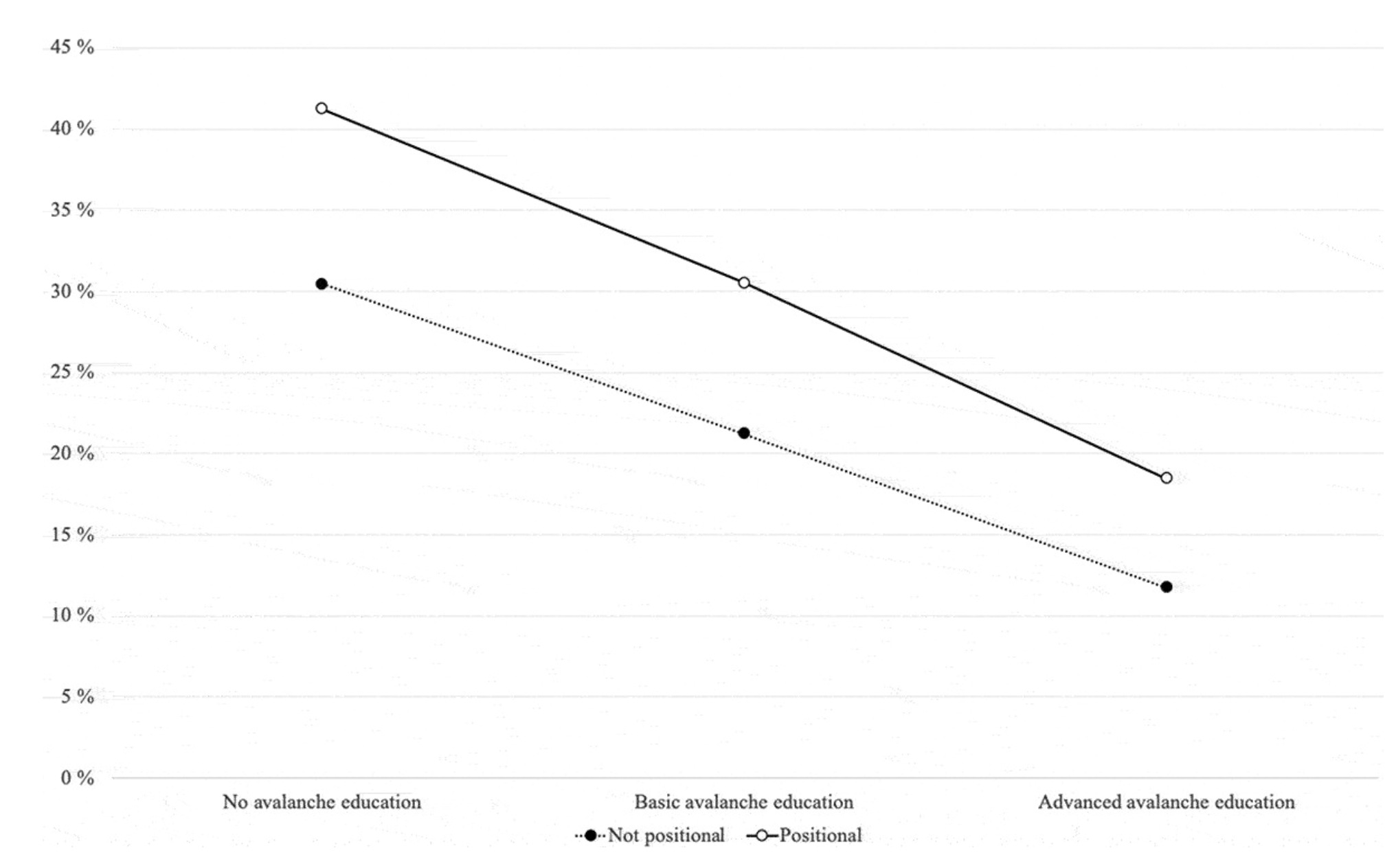
The semi-parametric results are qualitatively the same as the parametric results, with the exception that the coefficient on age is negative. As for the regression on positionality, all effects are significant in the Klein and Spady regression.
5. Discussion
In this paper, we study the link between positional preferences (a desire to gain social status) and risk-taking behaviour among individuals who engage in the popular leisure activity, winter backcountry riding. Backcountry riders who venture into avalanche terrain voluntarily subject themselves to the risk of being caught and potentially killed by an avalanche.
Thirty-three percent of our participants state that their level of satisfaction with a riding weekend would be affected by other riders’ terrain choices. We define these riders as ‘positional’, i.e., that they care about social position. This finding is in accordance with previous research, which finds that many individuals care about relative consumption and performance (e.g., Alpizar et al., 2005; Carlsson et al., 2007; Hillesheim & Mechtel, 2013; Solnick & Hemenway, 1998, 2005).
Our results further suggest that riders, who associate steep riding with social respect, are more likely to be positional about steep terrain. These riders are also more likely to post pictures of bold terrain choices on social media. By contrast, we find that social norms promoting a safety culture is negatively correlated with this type of positionality. This supports the notion that positional preferences are linked to social norms (Baumeister et al., 1989) and that risk-taking holds a social value in some social groups (Brown, 1965).
The main finding in our study is that backcountry riders, who are positional about riding terrain, are more likely to state that they would be willing to accept to ride a risky line. These results are in accordance with the findings by Leary et al. (1994) and Aloise-Young et al. (1996), who find that the desire to maintain a positive self-image may engage in behaviours detrimental to health. Our contribution is that we analyse the mediating link between social norms, and risk-taking behaviour, and that we evaluate the effect on physical risk-taking with immediate and potentially fatal consequences.
Finally, we find that avalanche training reduces the stated willingness to ride a potentially risky line but does not reduce the effect of positionality. This suggests that avalanche education in its current form is helpful in guiding assessment of objective risk, but not for identifying positional individuals.
Social norms evolve over time and can therefore be changed. However, it may be difficult to change social norms via official policy interventions. This is particularly true with highly individualised outdoor pursuits where participants express free will via their participation in risky behaviours. No formal entity controls access to the sport or access to public land where most backcountry riding takes place. However, this does not mean that it is impossible to change behaviour. Access to avalanche education is widespread and affordable to most riders and has increasingly become part of the culture of the sport. Our data indicates that those with higher levels of education tend to moderate their risk-taking behaviour, but we see no effect of education on positional preferences. If the role of social factors is included in the curriculum, avalanche education institutions may be able to increase awareness of how such factors affect risk-taking behaviour. Another possibility is to reach out to backcountry clubs and influencers in the sport. If these individuals promote informed and conservative decision-making, the direction of positional preferences may change. Gamification and development of online platforms that borrow ideas from social media (e.g., Facebook and Instagram) may prove to be fertile ground for promoting safety norms that benefit individuals and society. An example of such a platform is the ‘Backcountry Ascender’ (see Mayer, 2018). The backcountry riding community is well placed to capitalise on these ideas, as the social norms are strongly supportive of avalanche education. We need to ensure that the education is achieving the desired aims with respect to risk perception, as opposed to facilitating increased risk exposure.
Our study has several caveats. First, our participants constitute a convenience sample from North America and cannot be assumed to be completely representative for the general backcountry population. However, backcountry riding is increasingly popular globally. As in North America, backcountry riders constitute the majority of avalanche victims in the European Alps (Zweifel et al., 2016). Previous research suggests that positional preferences for status goods is a common phenomenon in both the United States (e.g., Solnick & Hemenway, 1998, 2005), Sweden (e.g., Carlsson et al., 2007), Germany (Hillesheim & Mechtel, 2013), and Costa Rica (Alpizar et al., 2005). Hence, although it is likely that there are differences in culture and social norms between North American and riders in other regions, our analysis should still be relevant for backcountry riders, educators and policymakers outside of North America.
Second, we use hypothetical choices as a proxy for risk-taking behaviour. Responses to hypothetical questions may differ from real-life behaviour, especially if participants are motivated to provide ‘correct’ answers. Many of our participants accessed the survey via avalanche education centres and avalanche forecast centres. This may have led participants to believe that the safe run represented the ‘right’ answer. The only measure of real-life risk-taking that we have access to is past experiences of avalanche incidents. This measure is problematic because experiences may well change preferences. A proportion test of near-miss accidents among positional and non-positional individuals does not produce significant results (z = 0.340, p = 0.690). However, positional riders are over-represented among participants with experience of an avalanche accident (z = −1.848, p = 0.032). A third caveat with our study is that positional preferences for risky leisure activities are difficult to capture. Some individuals perceive risk and technical challenge as something positive, while others see it as a something inherently negative. Not all individuals who choose a more technically challenging ride are positional, as some may just want to challenge their abilities.
Our instrument is an incomplete measure of positionality, and further research (preferably field-based) is needed. However, from the comments on the survey, it appears as if the respondents had not previously thought about the impact of social factors on their behaviour and level of satisfaction. Many expressed that answering the survey questions encouraged personal reflection about their choices and motivations in the backcountry. Although further analysis and research are needed to validate our results, we argue that an inclusion of discussions about social values in avalanche courses may prove fruitful. By including this as part of future avalanche education we may increase the awareness of the role of positionality in decision-making in avalanche terrain, and through this awareness negate, or reduce the potential negative outcomes. It is also likely that these findings have wider applicability beyond our current case study and may hold for implications for other risky leisure activities and for understanding the relationship between positionality and voluntary risk more broadly.
6. Conclusion
Risky behaviour among backcountry riders is, in part, a function of their self-conception as consumers of risk and the degree of social acceptance it confers on them in their social group. Positional riders potentially increase both the individual and societal costs of their actions. Our hypothetical choice exercise combined with additional survey data suggests that the behaviour of positional riders is associated with perceived peer acceptance, and social media use.
Knowledge on the role of positional preferences and social norms for unwanted risk-taking behaviour can aid policymakers to design efficient interventions. Changing risky positional behaviours may involve designing social institutions that influence positional behaviour rather than alleviating it. Future avalanche educators may consider how the content and delivery of their materials may differentially influence positional and non-positional participants.
Unfortunately, our study has some limitations, the most important being the use of hypothetical choices. Real-life choices, taken in the heat of the moment, likely differ from coldly calibrated responses to survey questions. Another limitation is that our analysis is based on a convenience sample. The self-selection into the sample means that our participants may not represent the general backcountry population. We, therefore, hope that future research will employ techniques, e.g., GPS-tracking on a large and heterogeneous sample of backcountry riders. If researchers can follow the tracks of riders during a season, and combine GPS data with background information, such as positional preferences, this holds the potential to generate potentially powerful new knowledge.
Andrea Mannberg, Jordy Hendrikx & Jerry Johnson (2020) Risky positioning – social aspirations and risk-taking behaviour in avalanche terrain, Leisure Studies, DOI: 10.1080/02614367.2020.1831046
Andrea Mannberg is a professor in economics. Her speciality is decision-making and risk-taking behaviour.
Jordy Hendrikx is an associate professor in geography. His speciality is snow science and decision-making in avalanche terrain.
Jerry Johnson is a professor in political science. His speciality is use of public lands and decision-making in avalanche terrain.


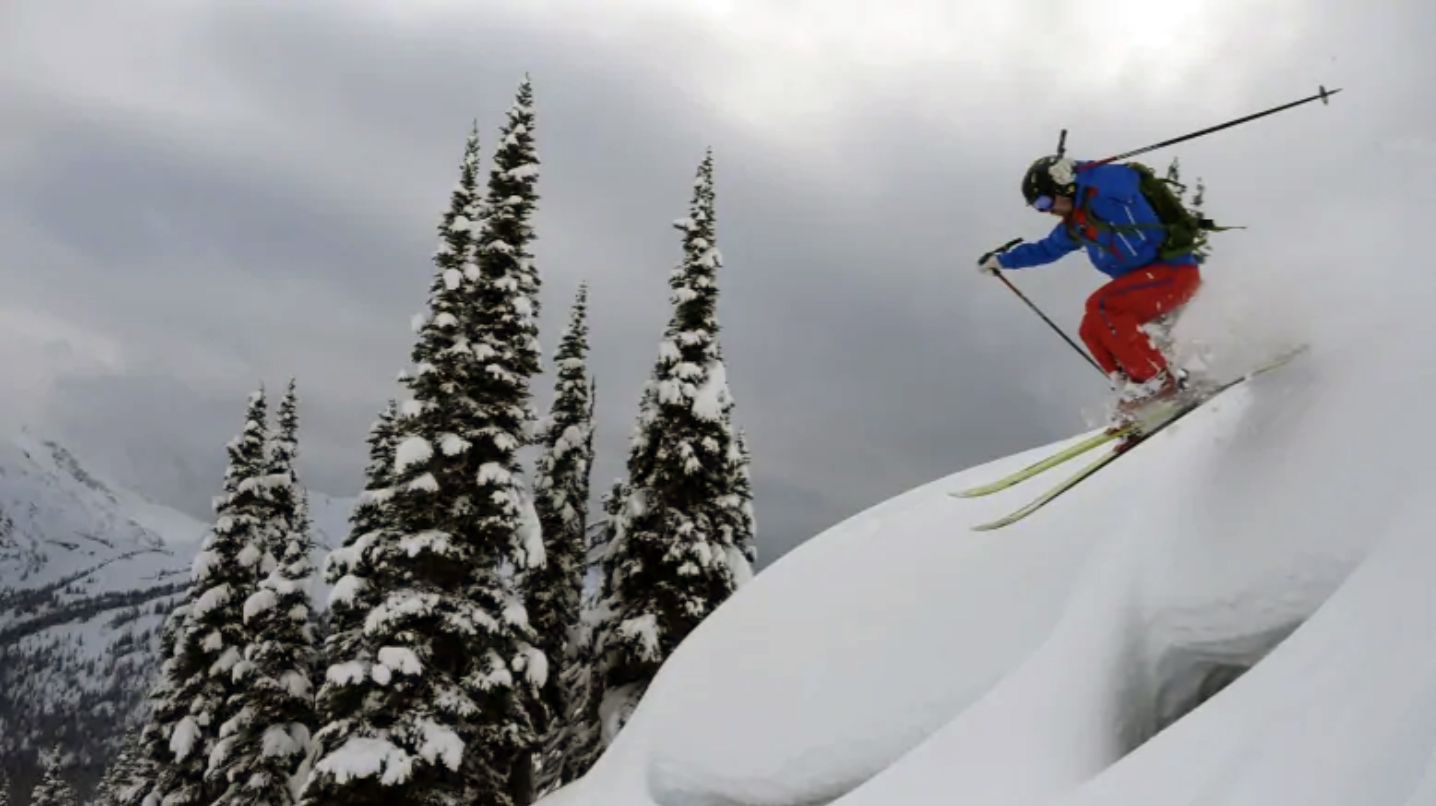
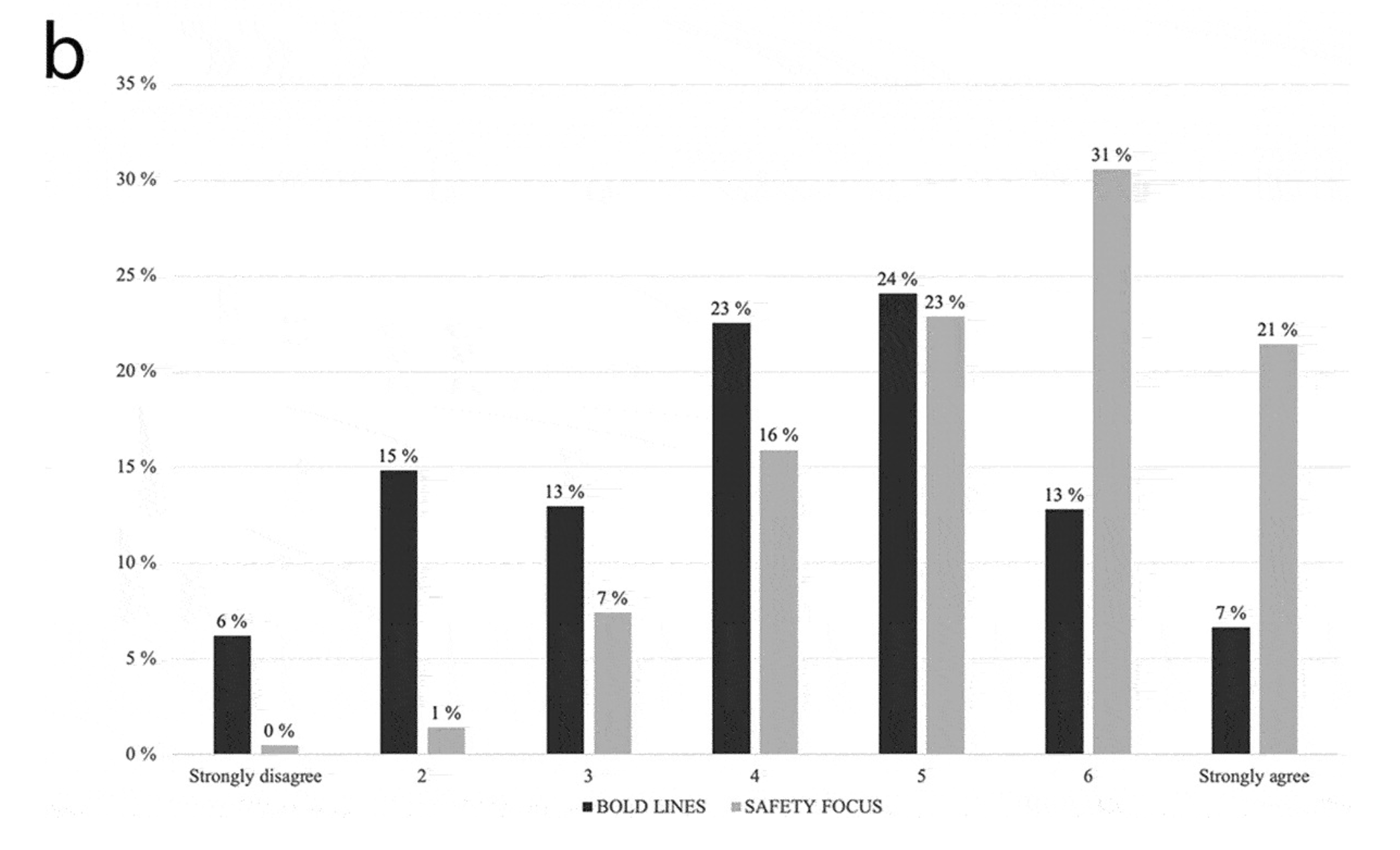

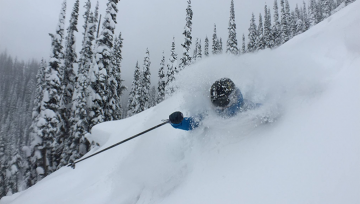
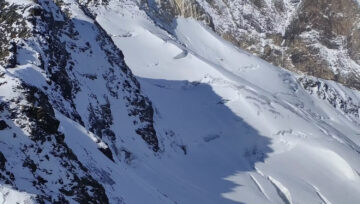
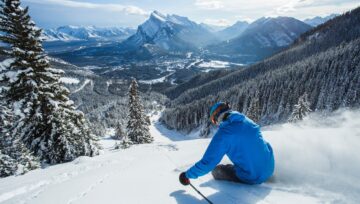
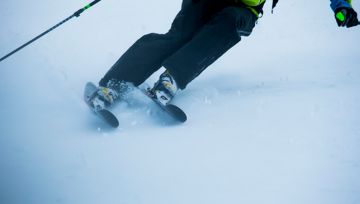



Comments